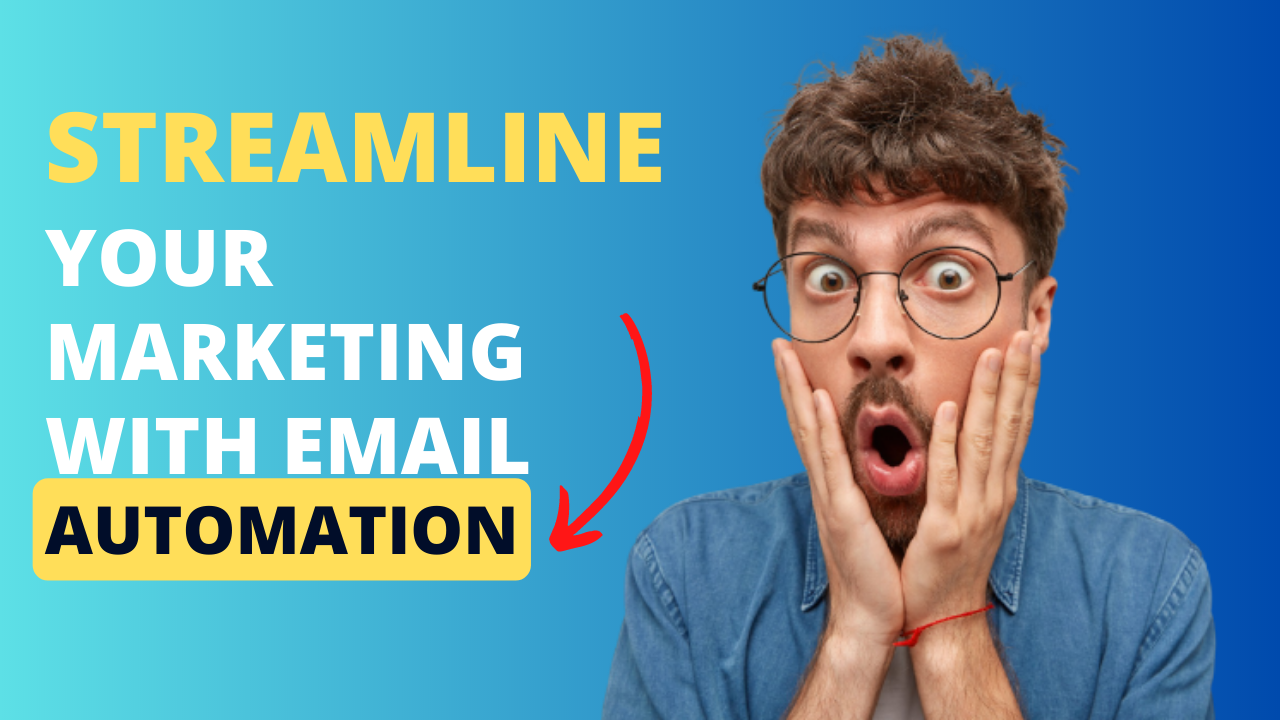In today’s digital age, effective marketing strategies are essential for businesses to thrive and succeed. One such strategy that has gained significant popularity is email automation. With email automation, you can streamline your marketing efforts, enhance customer engagement, and drive conversions. This article will guide you through the process of streamlining your marketing campaigns using email automation, exploring its benefits, implementation, and best practices.
Table of Contents
- Introduction to Email Automation
- Benefits of Email Automation
- Selecting an Email Automation Tool
- Building Your Email List
- Crafting Effective Email Campaigns
- Personalization and Segmentation
- A/B Testing for Optimization
- Automating the Customer Journey
- Monitoring and Analyzing Performance
- Integrating Email Automation with Other Channels
- Avoiding Common Pitfalls
- Best Practices for Email Automation
- Future Trends in Email Marketing
- Conclusion
- FAQs
Introduction to Email Automation
Email automation is the process of sending targeted and personalized emails to subscribers at predetermined intervals or based on specific triggers. It eliminates the need for manual intervention in repetitive tasks, allowing marketers to focus on high-value activities. By automating email campaigns, businesses can save time, improve efficiency, and deliver tailored messages to their audience.

Benefits of Email Automation
Email automation offers several benefits for businesses seeking to streamline their marketing efforts. Some key advantages include:
1. Time and Resource Efficiency
Automating repetitive tasks such as welcome emails, order confirmations, and follow-up messages saves valuable time and resources. Marketers can allocate their efforts towards strategy development, content creation, and analyzing campaign performance.
2. Enhanced Customer Engagement
Personalized and timely emails can significantly improve customer engagement. By segmenting your audience and delivering relevant content, you can foster stronger connections and build trust with your subscribers.
3. Increased Conversions and Sales
Email automation allows you to nurture leads throughout their customer journey, guiding them from awareness to conversion. Automated emails can trigger actions such as abandoned cart reminders, product recommendations, and special promotions, increasing the chances of generating sales.
4. Improved ROI and Cost-effectiveness
Compared to other marketing channels, email automation is relatively cost-effective and offers a higher return on investment (ROI). With targeted campaigns and improved conversions, businesses can achieve better results while keeping costs in check.
Selecting an Email Automation Tool
Choosing the right email automation tool is crucial for a successful marketing campaign. Consider the following factors when selecting a tool:
1. Features and Functionality
Evaluate the features and functionalities provided by the email automation tool. Look for capabilities such as list segmentation, A/B testing, personalization options, and analytics.
2. Integration Capabilities
Ensure that the tool integrates seamlessly with your existing marketing stack, including customer relationship management (CRM) systems, content management systems (CMS), and e-commerce platforms.
3. Scalability and Pricing
Consider your current and future needs in terms of subscriber count and email volume. Select a tool that can accommodate your growth without significant cost increases.
4. User-Friendliness
The tool should have an intuitive interface and user-friendly design, enabling you to create, schedule, and monitor your email campaigns easily.
Building Your Email List
A high-quality email list forms the foundation of successful email marketing campaigns. Follow these strategies to build a robust email list:
1. Opt-in Forms and Landing Pages
Place opt-in forms strategically on your website and landing pages. Offer incentives such as exclusive content, discounts, or freebies in exchange for email subscriptions.
2. Content Upgrades and Lead Magnets
Create valuable content upgrades or lead magnets, such as ebooks, whitepapers, or webinars, to entice visitors to provide their email addresses.
3. Social Media Integration
Leverage your social media channels to promote your email newsletter and encourage followers to join your email list.
4. Partner Collaborations
Collaborate with complementary businesses or influencers to co-create content or host joint webinars, enabling cross-promotion and list growth.
Crafting Effective Email Campaigns
Creating compelling and engaging email campaigns is essential for maximizing the impact of your automation efforts. Consider the following tips:
1. Attention-Grabbing Subject Lines
Craft subject lines that are concise, captivating, and evoke curiosity. A compelling subject line increases the likelihood of your email being opened.
2. Compelling Content and Visuals
Create well-written and visually appealing content that resonates with your audience. Use a conversational tone, incorporate storytelling techniques, and include relevant images or videos.
3. Clear Call-to-Action (CTA)
Include a clear and prominent call-to-action in your emails, guiding recipients towards the desired action, such as making a purchase, downloading a resource, or signing up for an event.
4. Mobile-Friendly Design
Optimize your email templates for mobile devices, as a significant portion of your audience accesses emails through smartphones and tablets.
Personalization and Segmentation
Segmentation and personalization are crucial elements of effective email automation. Tailor your messages based on recipient demographics, preferences, and behaviors to increase relevance and engagement. Leverage customer data and implement dynamic content to deliver personalized experiences at scale.
A/B Testing for Optimization
A/B testing allows you to experiment with different elements of your email campaigns and identify the most effective strategies. Test variables such as subject lines, CTAs, email copy, visuals, and send times to optimize your campaigns for better engagement and conversions.
Automating the Customer Journey
Map out your customer journey and identify key touchpoints where automated emails can be triggered. Automate welcome emails, onboarding sequences, nurture campaigns, re-engagement efforts, and post-purchase follow-ups to provide a seamless and personalized experience for your customers.
Monitoring and Analyzing Performance
Regularly monitor and analyze the performance of your email automation campaigns. Track metrics such as open rates, click-through rates, conversion rates, and revenue generated. Use this data to identify areas for improvement and make data-driven decisions.
Integrating Email Automation with Other Channels
To maximize the impact of your marketing efforts, integrate email automation with other channels such as social media, content marketing, and retargeting campaigns. Create a cohesive and omnichannel experience for your audience, ensuring consistent messaging across different touchpoints.
Avoiding Common Pitfalls
While implementing email automation, be mindful of common pitfalls to ensure the success of your campaigns:
- Don’t over-automate: Maintain a balance between automation and personalization to avoid coming across as impersonal or spammy.
- Regularly update your email list: Remove inactive subscribers and ensure your list remains relevant and engaged.
- Test thoroughly: Before launching automated campaigns, thoroughly test all aspects, including email templates, links, and personalization tags.
Best Practices for Email Automation
Follow these best practices to optimize your email automation strategy:
- Segment your audience based on demographics, preferences, and behaviors.
- Provide valuable and relevant content to nurture leads.
- Maintain consistency in branding and messaging across your email campaigns.
- Monitor and analyze campaign performance to identify areas for improvement.
- Continuously test and optimize your campaigns to enhance results.
Future Trends in Email Marketing
The landscape of email marketing continues to evolve, and it’s essential to stay informed about emerging trends. Some future trends to watch out for include:
- Hyper-personalization: Advanced personalization techniques leveraging artificial intelligence (AI) and machine learning (ML) will enable even more tailored and individualized email experiences.
- Interactive emails: Emails with interactive elements such as polls, quizzes, and product carousels will drive higher engagement and interactivity.
- Advanced automation: Automation tools will become more sophisticated, offering advanced workflows, predictive analytics, and more seamless integrations with other marketing technologies.
Discover ” Natural Orders: Email Marketing Automation Strategy for Small Online Business” Book

Natural Orders is the most comprehensive overview available for small online business owners looking to understand and implement the full potential of email marketing automation.
With unmatched audience size, engagement, and ROI, many feel they “should be doing more” when it comes to email. But what does this actually look like? This book helps you consider:
- The most effective methods for collecting email addresses (without annoying your traffic)
- Developing and converting new subscribers into first-time buyers
- Advanced strategies for segmentation and personalization
- Building on the above to increase the lifetime value of your top customers
- Where email best fits in your marketing mix, and how it’s uniquely suited to the challenges of an increasingly competitive online business environment
These essential problems of email strategy are uniquely answered by an “ecosystem approach”. You’ll learn how to develop a healthy, engaged and profitable database that mimics the spectacularly successful growth systems that surround us everyday in the natural world.
With a background combining both email marketing and Ecology, author Matt Treacey knows first-hand what it takes to build the systems, like these, designed for growth.
Drawing from a track record generating millions of dollars in email revenue for businesses across the USA and UK, you too will discover the natural orders inside your email database, and how you can leverage them to take your business to its next level.
“There’s no clearer guide to getting maximum results and impact from email. This book will change the way you think about email marketing automation in your business” — Nir Eyal, author of Hooked: How to Build Habit-Forming Products and Indistractable
“…this is a long-overdue perspective on doing email marketing… a refreshing departure from conventional thinking” — Perry Marshall, Author of 80/20 Sales and Marketing.
“…in an increasingly competitive digital marketing landscape there is one channel that still reigns supreme: email. This is the guide you’ve been looking for.Natural Orders reveals the playbook on how you implement an email marketing system that will make you more money, without annoying your customers…” — Taylor Pearson, author of The End of Jobs.”We’ve all been waiting for this. Finally, the concepts of list building are anchored in a story that makes sense and makes it easy to replicate email marketing success.” — Viola Eva, founder Flow SEO
“For anyone looking to get the most out of their email marketing efforts, I’d highly recommend this book. This is an end-to-end system that’s easy to follow and actually implementable”. — Ethan Drower, Operating Partner Cite Medical Solutions
“Natural Orders is an engaging and unique approach to email marketing strategy for small online businesses. It gives some great analogies for understanding how to use the channel and how to its full potential.” — Eyram Adjogatse, CEO Probatech
Conclusion
Email automation is a powerful tool that allows businesses to streamline their marketing efforts, enhance customer engagement, and drive conversions. By following best practices, leveraging personalization, and continuously optimizing your campaigns, you can leverage email automation to its full potential and achieve remarkable results in your marketing endeavors.
FAQs
- Q: What is email automation?
- Email automation is the process of sending targeted and personalized emails to subscribers at predetermined intervals or based on specific triggers, eliminating the need for manual intervention.
- Q: What are the benefits of email automation?
- Email automation offers benefits such as time and resource efficiency, enhanced customer engagement, increased conversions and sales, and improved ROI.
- Q: How do I build an email list?
- Building an email list involves strategies like using opt-in forms, offering content upgrades and lead magnets, integrating with social media, and collaborating with partners.
- Q: How can I craft effective email campaigns?
- Crafting effective email campaigns involves attention-grabbing subject lines, compelling content and visuals, clear CTAs, and mobile-friendly design.
- Q: What are some future trends in email marketing?
- Future trends in email marketing include hyper-personalization, interactive emails, and advanced automation leveraging AI and ML technologies.




